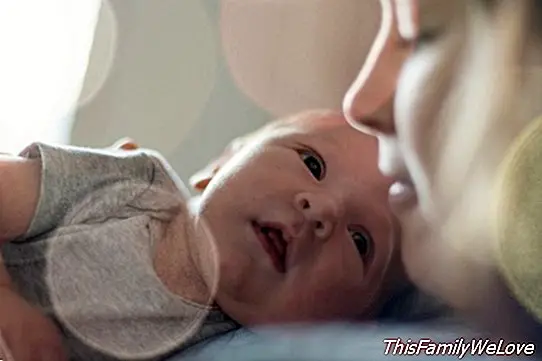Births and marriages increase in Spain

There are more children in Spain. It's not an impression, it's the reality: after more than five years of falls, births have increased, although very slightly: only 0.1 percent. This means that in 2014, 426,303 children were born, what is 588 more than in 2013. It is not the only increase: they have also done it the marriages, which have been 1.3% higher than in 2013.
This is clear from the study of the Natural Movement of Population released this week by the National Institute of Statistics (INE) and that reflects how since 2008, when 519,779 children were born (the maximum in 30 years), lThe birth figures have not done more than descend: the percentage has been reduced by 18 percent.
In this way, 2014 was the first year in which there has been an increase in children, although it has been very light: 0.1% It is also noteworthy that the number of children per woman has increased: from 1.27 in 2013 to 1.32 in 2014. This news, although good, has not affected the crude birth rate, which remains in 9.1 per thousand inhabitants.
Women of childbearing age
But these are not the only data we can extract from these figures. It has also been observed a reduction of number of women of childbearing age (that is, between 15 and 49 years old), which stands at 10.98 million in Spain, a figure lower than the 11.61 million in 2009. The reason for this is, according to the INE, that "they arrive at that age range less numerous generations born during the birth crisis of the 80s and the first half of the 90s, "for the" lower contribution of foreign immigration "and" the largest number of emigrations abroad in recent years. "
And, speaking of migrations, the data of the INE show that of the more than 426,000 births, 17.8% were of foreign mothers, a percentage that has decreased, since in 2013 it was 18.6%. Among foreign women, the number of children per woman is higher than that of Spanish women: in 2014 it stood at 1.61 compared to 1.27 children for each Spanish.
On the other hand, it is noteworthy that the data also show that the average age of maternity has risen again this last year: it is now at 31.8 years compared to 31.7 in 2013 or 30.8 in 2007 However, this is different between nationalities: foreigners have children before (at 29.3 years), while Spanish women expect more, up to 32.3 years.
This has been 2014
With regard to death, these have also increased in 2014: in this year there were 395,045 deaths, which means 1.2 percent more than in 2013. Infant mortality has also increased: in 2014 there was 2.9 deaths of children per thousand live births, which is two tenths more than in the previous year.
All these figures indicate that in Spain there has been a vegetative growth (births less deaths) 11.6 percent less than in the previous year: 31,678 people, the lowest balance since 2000. In addition, it has been negative because there have been more deaths than new lives in a total of nine communities: Galicia, Castilla y León, Asturias, Aragón, Extremadura, Basque Country and Cantabria. These communities, in fact, already had negative numbers in 2013, and they are added La Rioja and Castilla-La Mancha.
Where births of children and marriages increase
The number of births has not been the same throughout Spain: it has increased only in 10 autonomous communities during 2014, with greater increases of new babies in the Canary Islands (3.1%) and Extremadura (3.0%) as well as in the autonomous cities of Ceuta and Melilla (10.6% and 7.6%, respectively). On the other hand, the number of deaths increased in all communities except Extremadura, Galicia and the autonomous city of Ceuta.
With regard to marriages celebrated in Spain, these figures show that in 2014 158,425 couples were married, 1.3% more than in 2013, and the gross rate increased to 3.4 marriages per thousand inhabitants, one tenth more than in the previous year.
The average age for marriage continues to rise, and currently stands at 36.9 years for men and 34 for women. In 16% of marriages celebrated with spouses of different sexes, at least one of them was a foreigner. This percentage is lower than in 2013 (which was 18.1%).
Angela R. Bonachera




